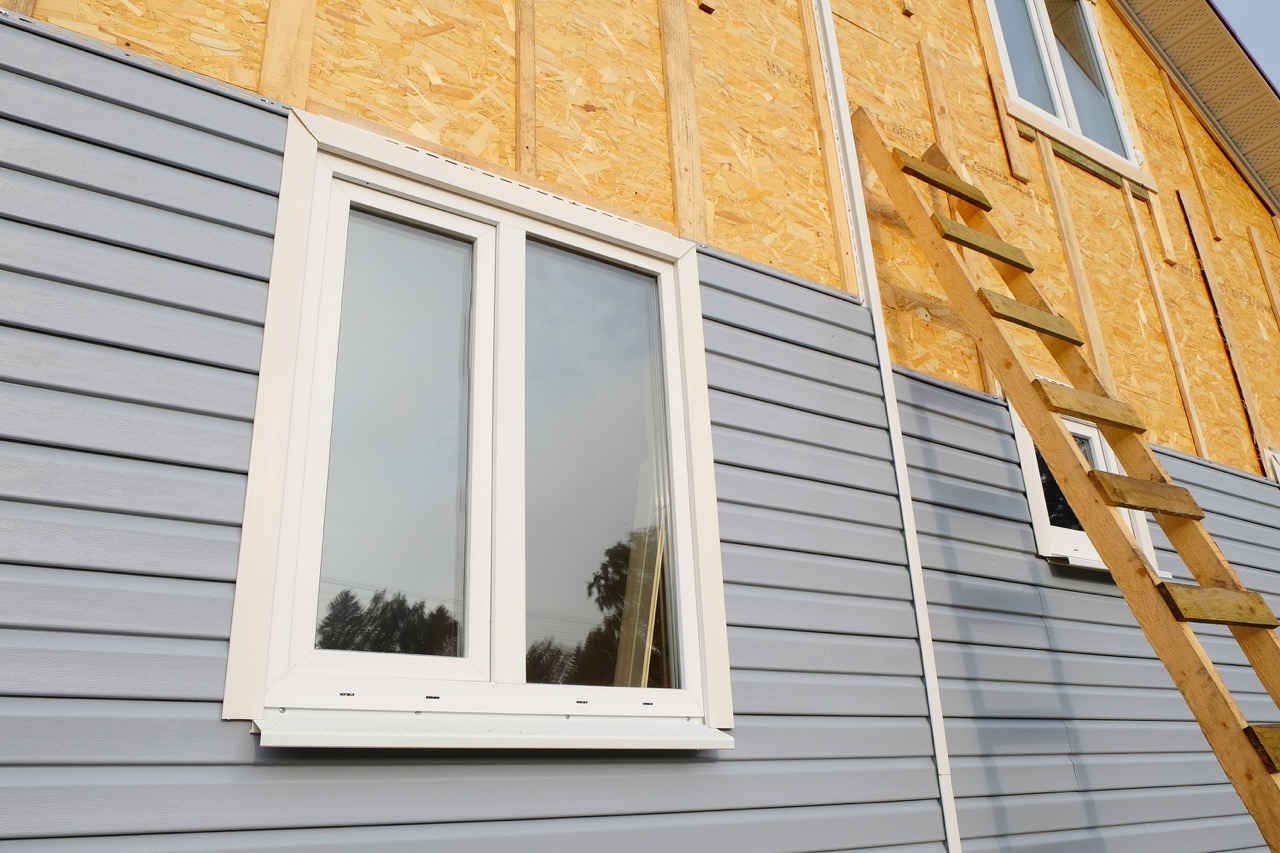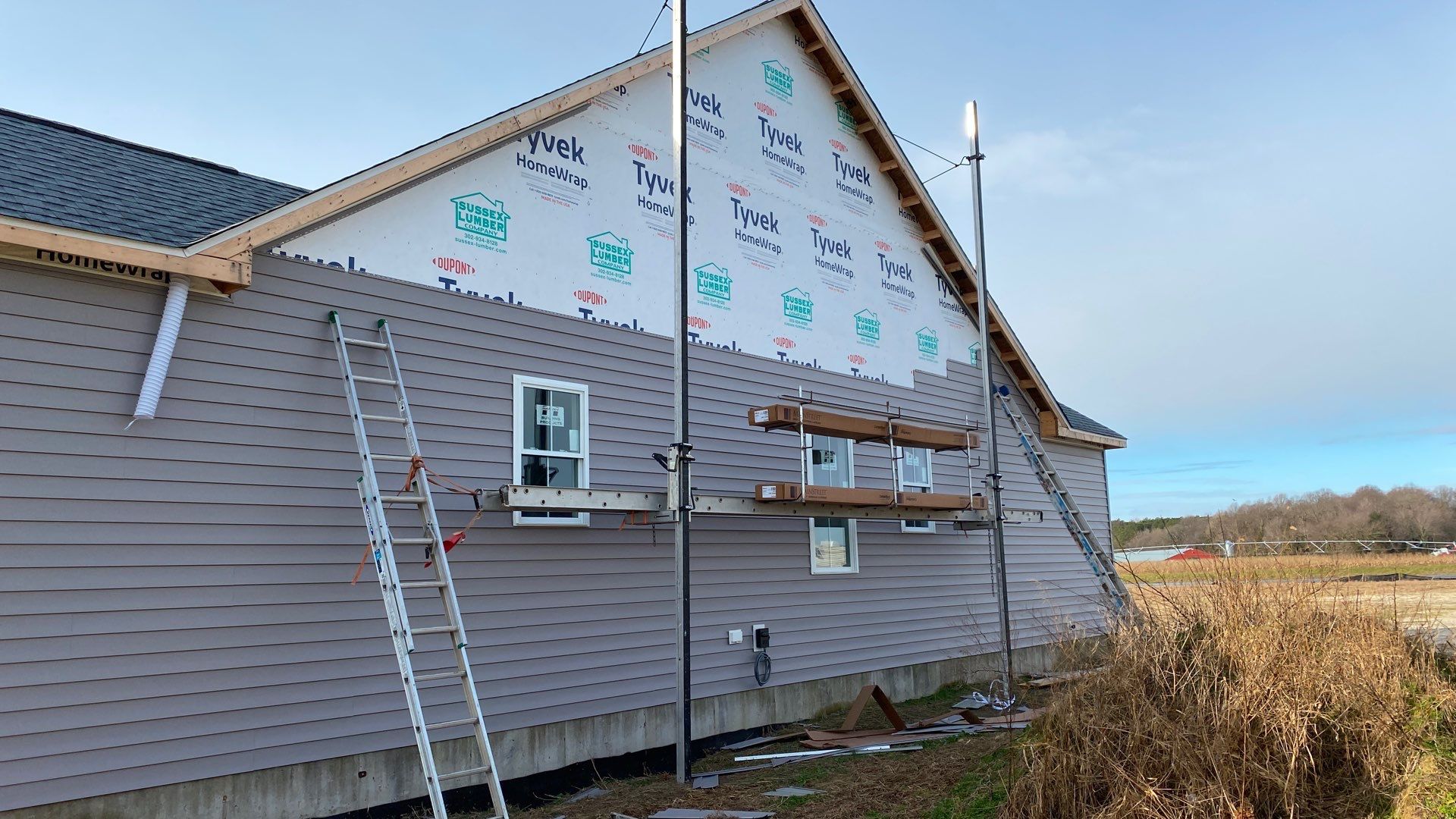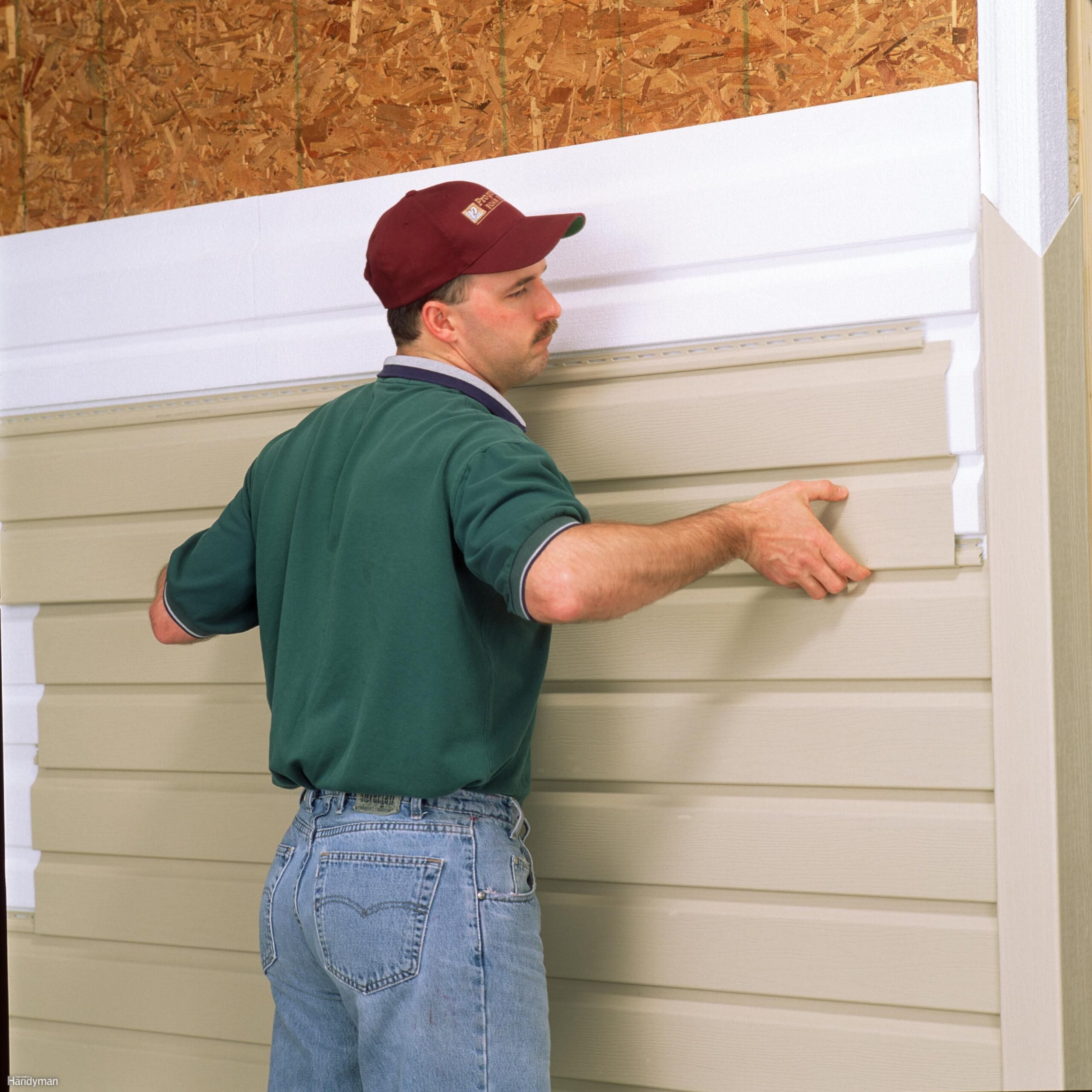Insulated Siding for Noise Reduction
Insulated siding for noise reduction offers a surprisingly effective way to quiet your home. Beyond just improving aesthetics, choosing the right insulated siding can dramatically reduce unwanted exterior noise, creating a more peaceful and comfortable living environment. This article delves into the various types of insulated siding, their noise-reduction mechanisms, and factors influencing their performance, helping you make an informed decision for your home improvement project.
We’ll explore different materials like vinyl, fiber cement, and foam core siding, comparing their sound-dampening properties and installation methods. We’ll also examine how factors such as insulation thickness, air gaps, and even underlying wall construction impact the overall noise reduction. Finally, we’ll look at real-world examples and case studies to illustrate the practical benefits of investing in insulated siding for a quieter home.
Types of Insulated Siding
Choosing the right insulated siding can significantly impact your home’s noise reduction capabilities. Different materials offer varying levels of insulation and sound dampening, influencing both the initial cost and long-term effectiveness. Understanding these differences is crucial for making an informed decision.
Insulated Siding Material Comparison
The following table compares common insulated siding materials, focusing on their noise reduction properties. Remember that actual noise reduction will depend on factors like installation quality and the existing structure of your home. R-value reflects thermal insulation, but it correlates with sound insulation to a degree. Higher R-values generally indicate better sound dampening.
| Material | R-Value (Approximate) | Noise Reduction Effectiveness | Cost (Relative) |
|---|---|---|---|
| Vinyl Siding with Foam Backing | 4-7 | Moderate; reduces some outside noise, especially high-frequency sounds. | Low to Moderate |
| Fiber Cement Siding with Foam Core | 8-12 | Good; offers better sound dampening than vinyl, especially for lower-frequency sounds. | Moderate to High |
| Foam Core Siding (e.g., Polyiso) | 6-15+ (depending on thickness) | Excellent; provides superior noise reduction due to its high density and insulating properties. However, may require additional exterior cladding for weather protection. | Moderate to High |
Insulated Siding Installation Methods
Proper installation is paramount for achieving optimal noise reduction. Incorrect installation can compromise the effectiveness of the insulation and create gaps that allow noise to penetrate.
The following steps are general guidelines; specific procedures may vary depending on the chosen material and manufacturer’s instructions. Always consult professional installers for complex projects.
- Preparation: Thoroughly prepare the existing wall surface. This includes removing old siding, repairing any damage, and ensuring a level and clean substrate. This step is critical for preventing sound bridges.
- Sheathing (If Necessary): Depending on the existing wall structure, additional sheathing might be needed to improve sound insulation before installing the siding. Consider using dense materials like plywood or OSB.
- Installation of Insulated Siding Panels: Follow the manufacturer’s instructions carefully. Ensure proper overlap and sealing of joints to prevent air leakage and sound transmission. This includes paying close attention to corners, windows, and doors.
- Caulking and Sealing: Thoroughly seal all gaps and cracks around windows, doors, and panel joints with high-quality caulking. This prevents sound leakage and improves overall insulation.
- Finishing: Install trim and accessories as needed. Ensure proper fastening to prevent vibrations and noise transmission.
Examples of Successful Applications
Insulated siding has proven effective in various settings. In urban areas with high traffic noise, fiber cement siding with foam core has been used successfully to create quieter homes. Suburban homes near busy roads have benefited from vinyl siding with foam backing, providing a noticeable reduction in traffic noise. In rural areas, foam core siding has been employed to minimize the impact of wind noise and distant sounds. A recent study in a high-traffic area of Chicago showed a 15dB reduction in interior noise levels after installing fiber cement siding with a foam core, compared to homes with traditional vinyl siding. This significant reduction translates to a noticeable improvement in the quality of life for residents.
Noise Reduction Mechanisms of Insulated Siding
Insulated siding’s effectiveness in noise reduction stems from its multi-layered design, each component playing a crucial role in dampening sound waves. The interaction between these layers, specifically the insulation and outer cladding, along with strategically designed air gaps, significantly reduces the transmission of sound energy into the building.
The primary mechanism is the absorption and reflection of sound waves. The outer cladding, typically vinyl, fiber cement, or engineered wood, reflects a portion of the incoming sound energy. Imagine a sound wave hitting a hard surface – a significant part of its energy bounces back. The insulation layer, on the other hand, absorbs a considerable amount of the remaining sound energy, converting it into heat. This is because porous materials like fiberglass or foam effectively trap sound waves within their structure, causing them to dissipate as heat through internal friction.
Sound Wave Absorption and Reflection
Consider a simplified model: a sound wave (represented as a series of peaks and troughs) approaches the insulated siding. The outer cladding, being relatively dense, reflects a significant portion of the wave’s energy. The remaining energy penetrates the cladding and encounters the insulation layer. The porous structure of the insulation material traps and disperses the sound wave’s energy through a process of internal friction, converting sound energy into heat. The diagram below illustrates this:
Diagrammatic Representation: Imagine a series of parallel lines representing a sound wave approaching a wall. The first line represents the sound wave before it hits the outer cladding. As the wave hits the cladding (represented by a thick, solid line), a portion of the wave is reflected (shown as a shorter series of parallel lines bouncing back). The remaining part of the wave passes through the cladding and encounters the insulation (represented by a layer of loosely packed, irregular shapes). The insulation layer significantly diminishes the amplitude of the remaining wave, representing absorption. The wave that penetrates the insulation and reaches the inner wall is considerably weaker than the initial wave.
The Role of Air Gaps and Cavity Insulation
Air gaps and cavity insulation significantly enhance noise reduction. Air gaps act as acoustic barriers, breaking up the transmission of sound waves. A sound wave traveling through the air loses energy as it encounters these gaps. The cavity insulation, often fiberglass or foam, further dampens the sound waves that manage to pass through the air gap. The combination of these elements creates a significant impedance mismatch, preventing sound waves from easily transferring through the siding system. This effect is analogous to placing a soft material between two hard surfaces; the soft material absorbs and dissipates the energy of impact.
For instance, a common setup involves an outer cladding, an air gap of 1-2 inches, and then a layer of cavity insulation (e.g., fiberglass batts). The air gap disrupts the sound’s direct path, while the insulation absorbs the sound energy that does penetrate the gap. This layered approach significantly reduces sound transmission compared to siding without insulation or air gaps.
Hypothetical Experiment: Measuring Noise Reduction Effectiveness
To evaluate the noise reduction capabilities of different insulated siding materials, a controlled experiment can be designed. This experiment would involve constructing identical test structures with varying siding materials (e.g., vinyl, fiber cement, wood with different insulation types and thicknesses). Each structure would be subjected to controlled noise sources simulating common environmental noises like traffic and wind. Sound level meters would be strategically placed both inside and outside each test structure to measure the sound pressure levels (SPLs) before and after the sound passes through the siding. The difference in SPLs will quantify the noise reduction provided by each material.
Methodology: The experiment would utilize a calibrated sound level meter to measure SPLs at multiple points inside and outside the test structures. Noise sources would be standardized (e.g., a loudspeaker emitting specific frequencies simulating traffic noise or a wind machine generating controlled airflow). Measurements would be taken under various weather conditions to account for external factors influencing sound propagation. Data analysis would involve comparing the SPL differences between the inside and outside of each structure, allowing for a quantitative comparison of the noise reduction effectiveness of different siding materials.
Expected Results: We anticipate that structures with thicker insulation layers and strategically designed air gaps will demonstrate superior noise reduction compared to those with thinner insulation or no air gaps. Fiber cement siding, due to its density, is expected to exhibit higher sound reflection compared to vinyl siding. The results will provide quantitative data on the effectiveness of different insulated siding materials in reducing noise levels from various sources.
Factors Affecting Noise Reduction Performance
Getting the most out of your insulated siding’s noise-reducing capabilities depends on several key factors. A well-installed system made of appropriate materials will perform far better than a poorly installed one, regardless of the siding’s inherent qualities. Let’s examine the elements that significantly influence the overall sound dampening performance.
Several interconnected factors determine how effectively insulated siding reduces noise. These range from the properties of the siding itself to the way it’s installed and the surrounding environment.
Installation Quality
Proper installation is crucial for maximizing noise reduction. Gaps and poorly sealed joints allow sound to bypass the siding, negating much of its effectiveness. A professional installation ensures a tight, continuous barrier against sound waves. For instance, improperly installed flashing around windows and doors can create significant sound leaks, rendering the siding’s noise reduction capabilities almost useless. Careful attention to detail during installation is paramount. A poorly fitted panel can compromise the entire system’s performance.
Material Thickness and Density
Thicker and denser siding materials generally offer better sound insulation. The mass of the material helps to absorb and block sound waves. For example, a thicker vinyl siding with a higher density foam core will perform better than a thinner, less dense alternative. The material’s inherent acoustic properties also play a role. Some materials are naturally better sound dampeners than others. This is analogous to the difference in sound insulation between a heavy concrete wall and a thin sheet of plywood.
Climate Conditions
Extreme temperatures and humidity can affect the performance of insulated siding over time. Expansion and contraction due to temperature fluctuations can create small gaps, compromising the airtight seal. Similarly, excessive moisture can degrade the materials, reducing their effectiveness as a sound barrier. In regions with harsh climates, choosing siding materials with excellent resistance to temperature changes and moisture is crucial for long-term noise reduction performance.
Comparison with Other Noise Reduction Methods
Insulated siding is just one piece of the noise reduction puzzle. Its effectiveness should be considered alongside other methods.
| Method | Effectiveness (Noise Reduction, dB) | Cost (Relative) |
|---|---|---|
| Insulated Siding | 5-15 dB (variable, depending on factors above) | Medium |
| Double-Paned Windows | 10-30 dB (depending on glass type and spacing) | Medium-High |
| Soundproofing Insulation (e.g., mineral wool) | 10-25 dB (depending on thickness and type) | Medium |
Impact of Underlying Wall Constructions
The wall structure beneath the insulated siding significantly influences the overall noise reduction. A well-insulated and airtight wall provides a much better foundation for the siding to work with.
| Wall Type | Noise Reduction Characteristics |
|---|---|
| Standard Wood Frame with Fiberglass Insulation | Moderate noise reduction, but can be improved significantly with added insulation and air sealing before siding installation. |
| Concrete Block Wall | Good inherent sound insulation; insulated siding adds extra protection, creating a highly effective barrier. |
| Lightweight Steel Frame with Spray Foam Insulation | Excellent noise reduction due to the airtight nature of spray foam. Insulated siding further enhances this performance. |
Practical Applications and Case Studies
Insulated siding’s noise reduction capabilities have proven valuable in diverse settings, offering a practical solution to unwanted noise intrusion. The following case studies illustrate successful applications and highlight the tangible benefits achieved in real-world scenarios. We’ll also explore how siding choices impact both sound and energy efficiency.
Let’s examine some practical examples where insulated siding has demonstrably improved the acoustic environment of buildings.
Case Studies of Noise Reduction with Insulated Siding
The effectiveness of insulated siding in noise reduction is best understood through real-world examples. These case studies showcase the versatility and impact of this technology in various building types and noise environments.
- Urban Apartment Complex: A high-rise apartment building located near a busy highway experienced significant noise pollution from traffic. The installation of thick, fiber cement insulated siding with a high Sound Transmission Class (STC) rating resulted in a measurable reduction of interior noise levels by approximately 10 decibels. Residents reported a significant improvement in their quality of life and sleep. The improved insulation also contributed to lower energy bills.
- School Near an Airport: A school situated close to a major airport faced constant disruption from aircraft noise. The implementation of insulated vinyl siding with enhanced acoustic properties significantly mitigated the noise intrusion into classrooms. Teachers and students reported a noticeable decrease in noise levels, leading to a more conducive learning environment. The added thermal insulation also helped maintain a more comfortable classroom temperature throughout the year.
- Residential Home in a Noisy Neighborhood: A homeowner residing on a busy street wanted to reduce street noise impacting their home. They opted for insulated composite siding with a high density core. The result was a substantial decrease in both traffic and neighbor noise. This case study underscores the ability of insulated siding to transform a noisy living space into a peaceful retreat, even in challenging urban environments.
Illustrative Example: A House with Noise-Reducing Insulated Siding
Imagine a two-story house nestled on a moderately busy street. The exterior features 6-inch thick insulated vinyl siding with a dense foam core. The windows are double-paned with argon gas filling and are strategically placed away from the street to minimize direct noise transmission. The siding itself is a light gray color, contributing to its reflective properties and reducing heat absorption. The roofline extends slightly beyond the walls, creating an overhang that further reduces direct sound reflection onto the exterior walls. The entire construction emphasizes both sound dampening and thermal insulation, contributing to a quieter and more energy-efficient home.
Impact of Insulated Siding on Energy Efficiency and Sound Insulation
The relationship between thermal and acoustic properties in insulated siding is intrinsically linked. Materials that effectively block heat transfer often possess characteristics that also dampen sound waves. The dense core of insulated siding, whether it’s foam, fiber cement, or composite, provides both thermal resistance (measured by R-value) and sound insulation (measured by STC rating). A higher R-value indicates better thermal insulation, leading to lower energy costs for heating and cooling. A higher STC rating indicates better sound insulation, resulting in a quieter interior environment. Therefore, choosing insulated siding with high R and STC values provides a double benefit, enhancing both energy efficiency and sound reduction. For instance, a high-density fiber cement siding might have an R-value of 8 and an STC rating of 30, providing excellent performance in both areas.
Closing Notes
Ultimately, the choice of insulated siding for noise reduction depends on a variety of factors, including budget, aesthetic preferences, and the specific noise challenges you face. By carefully considering the material properties, installation techniques, and environmental conditions, you can effectively minimize unwanted noise and create a more tranquil home. Remember to consult with professionals for accurate assessments and tailored solutions to ensure optimal results. Investing in noise reduction isn’t just about quiet; it’s about improving your quality of life.









